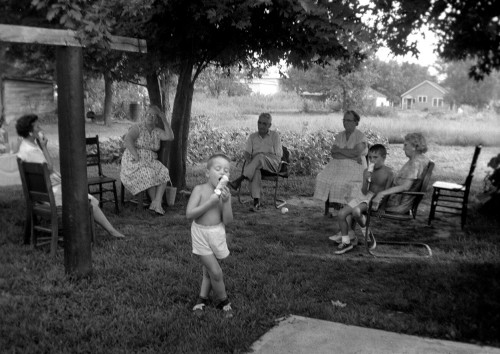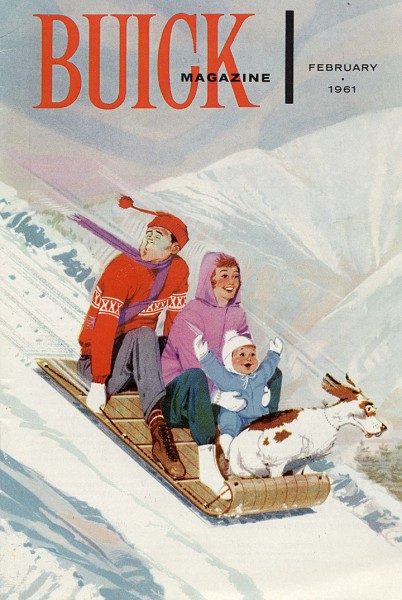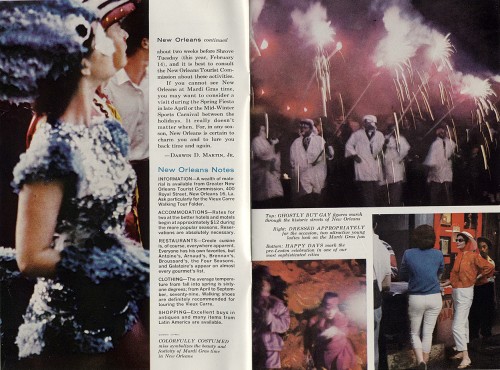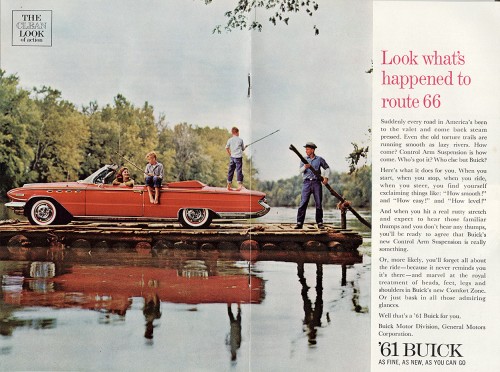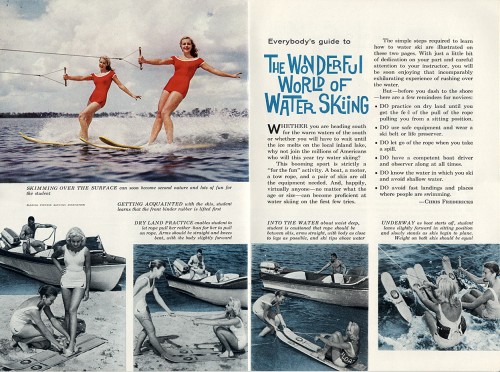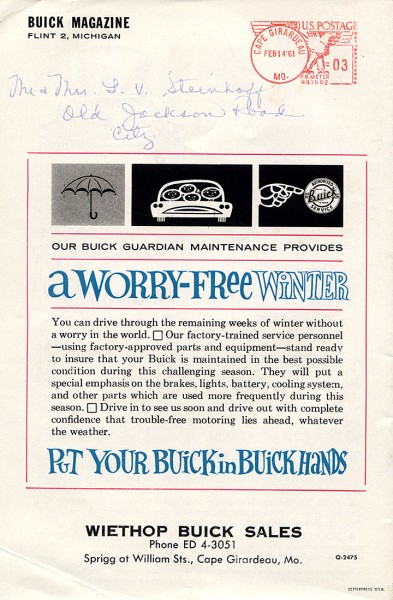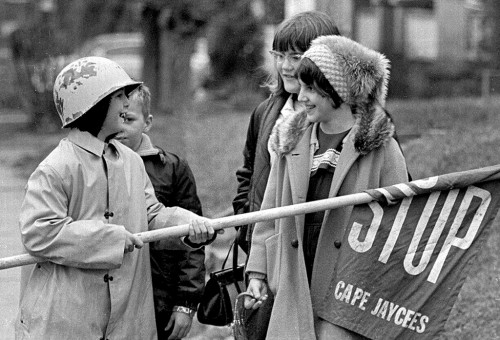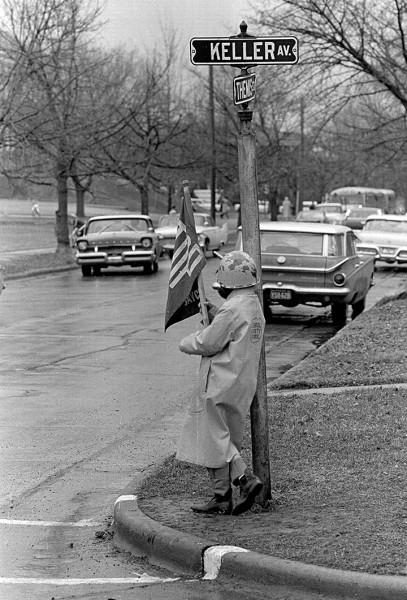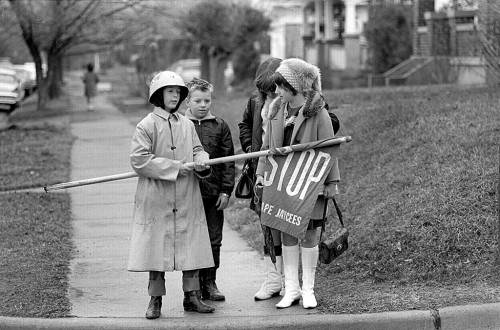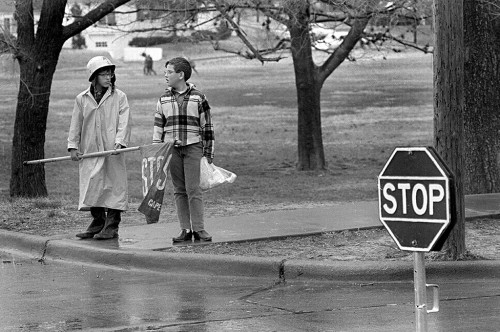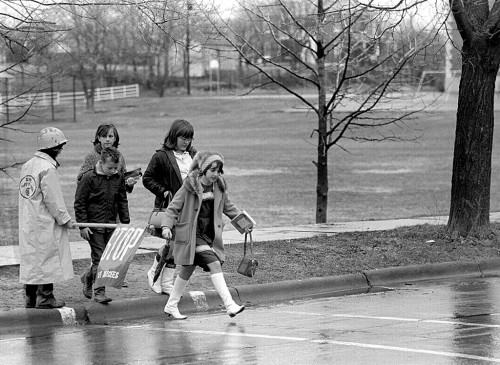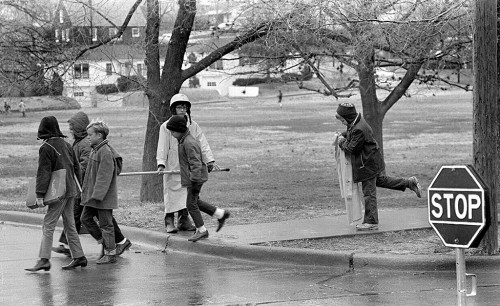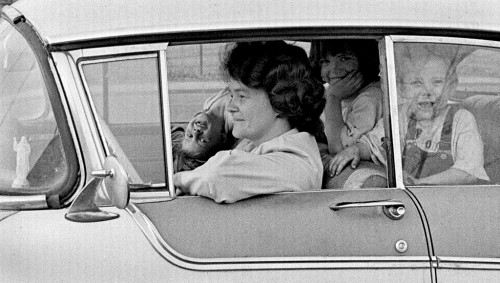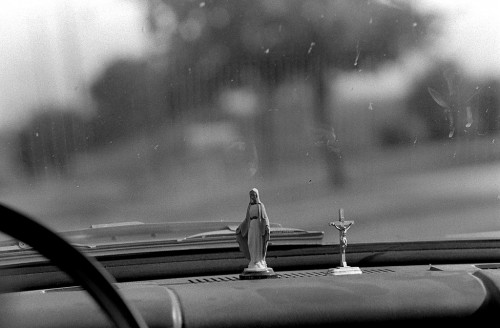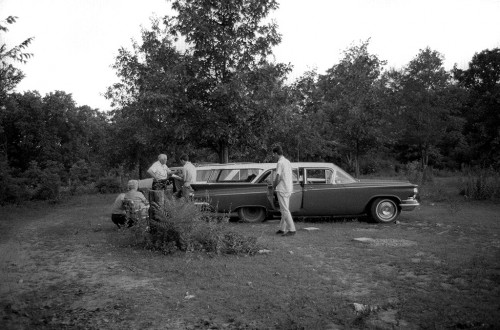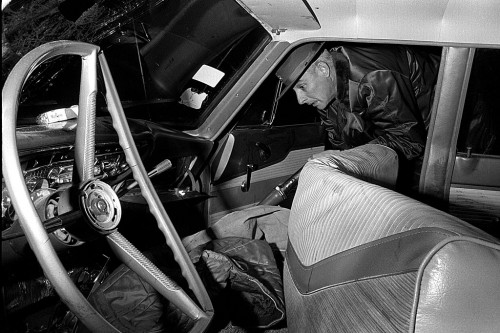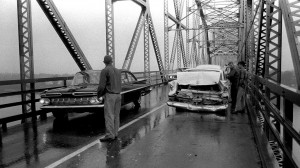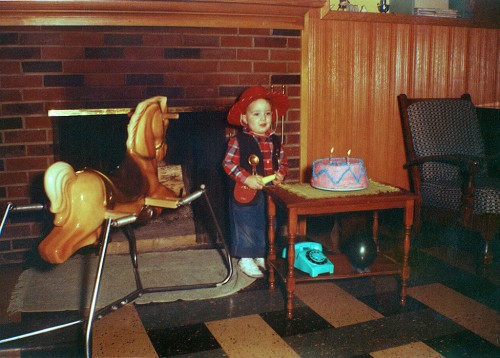 I was lucky enough to stumble across these negatives just in time for Brother Mark’s March 10 birthday. How old is he? I guess I could root around and find his birth year, but let’s just say (1) he’s younger than I am and (2) Mother, Kid Adam and I went to his 50th surprise party in St. Louis quite a few years back, so he’s on the far side of that.
I was lucky enough to stumble across these negatives just in time for Brother Mark’s March 10 birthday. How old is he? I guess I could root around and find his birth year, but let’s just say (1) he’s younger than I am and (2) Mother, Kid Adam and I went to his 50th surprise party in St. Louis quite a few years back, so he’s on the far side of that.
I think it will suffice to say that he no longer has to fear dying young.
Look at all the cultural icons in one photo: the cowboy hat, shirt and vest; the pinch-your-finger-right-off rocking horse; the toy telephone of indeterminate color and something dark and round with feet. It looks like his second birthday, unless Mother had used up all her candles on Mark’s older brothers.
Christmas time
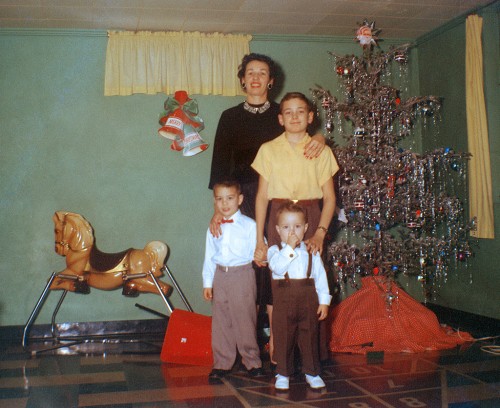 This shot of Mother, David, Mark and me was shot at Christmas. David, with his bow tie was the spiffy dresser of the crew. Mark looks like a deer caught in the headlights in the backwoods of Bollinger County.
This shot of Mother, David, Mark and me was shot at Christmas. David, with his bow tie was the spiffy dresser of the crew. Mark looks like a deer caught in the headlights in the backwoods of Bollinger County.
Speaking of spiffy dressers
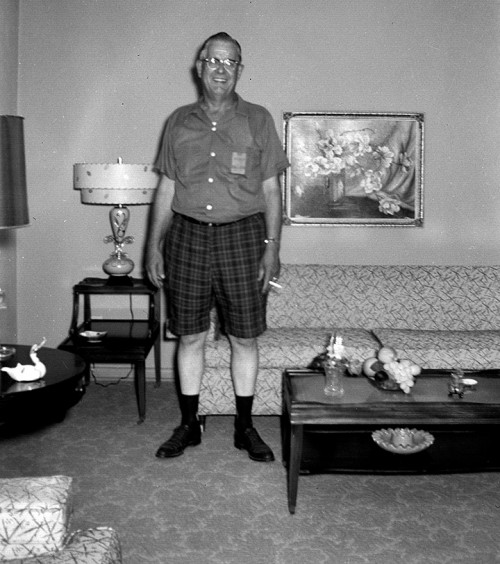 This is Dad’s brother Hubert, or “Unk” or “Uncle Hue.” He was the uncle every kid should have. He was funny, patient and enjoyed being around us kids. Uncle Mark followed in his footsteps.
This is Dad’s brother Hubert, or “Unk” or “Uncle Hue.” He was the uncle every kid should have. He was funny, patient and enjoyed being around us kids. Uncle Mark followed in his footsteps.
Well, maybe not exactly: I don’t think I’ve ever seen Mark in an outfit like this.
Peaceful coexistence
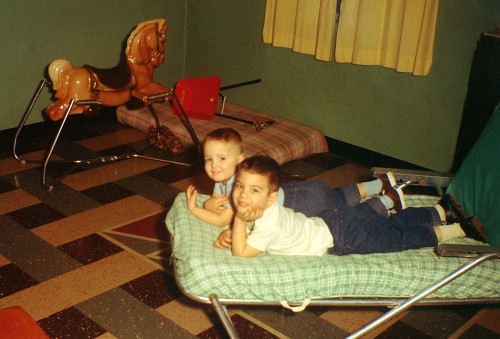 Someone must have wanted to get a shot of David and Mark when they weren’t saying things like, “He’s looking at me” or “Make him STOP!” It was a LONG, LONG trip from Cape to Florida and back in 1960.
Someone must have wanted to get a shot of David and Mark when they weren’t saying things like, “He’s looking at me” or “Make him STOP!” It was a LONG, LONG trip from Cape to Florida and back in 1960.
Afternoon at Grace and Guy’s
I actually like this as an image. We spent a lot of time under these shade trees at Grace and Guy Gardiner’s house in Advance. Mother is on the left and Grandmother Elsie Welch is on the right with David. Mark, the center of attention as usual, is in the foreground with his orange push-up.
Those hours of listening to oldtimers talk about taming Swampeast Missouri had an influence, I’m sure. It’s funny how the world works: one day we’re a kid listening to old farts spinning tales, and the next thing we know, we’ve taken their place.
Monkey, Buick and my bike
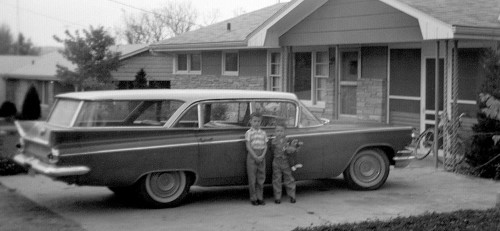 Brothers David and Mark pose next to our 1959 Buick LaSabre station wagon. Mark is dressed in some kind of strange jumpsuit and he’s holding a stuffed animal. It’s hard to make out, but I think it might have been a monkey. Off on the right is one of the few photos I’ve been able to find of my bike. It looks like it might have my Missourian paper bag in the front basket.
Brothers David and Mark pose next to our 1959 Buick LaSabre station wagon. Mark is dressed in some kind of strange jumpsuit and he’s holding a stuffed animal. It’s hard to make out, but I think it might have been a monkey. Off on the right is one of the few photos I’ve been able to find of my bike. It looks like it might have my Missourian paper bag in the front basket.
Chillin’ in the pool
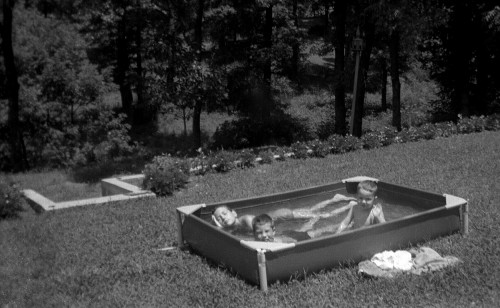 I didn’t get to spend much time in the Country Club swimming pool, but that didn’t matter. We Steinhoff boys had our own pool in the backyard. I think Mark was housebroken by the time we got the pool.
I didn’t get to spend much time in the Country Club swimming pool, but that didn’t matter. We Steinhoff boys had our own pool in the backyard. I think Mark was housebroken by the time we got the pool.
So, Mark, here’s wishing you a Happy Whatever Birthday.

